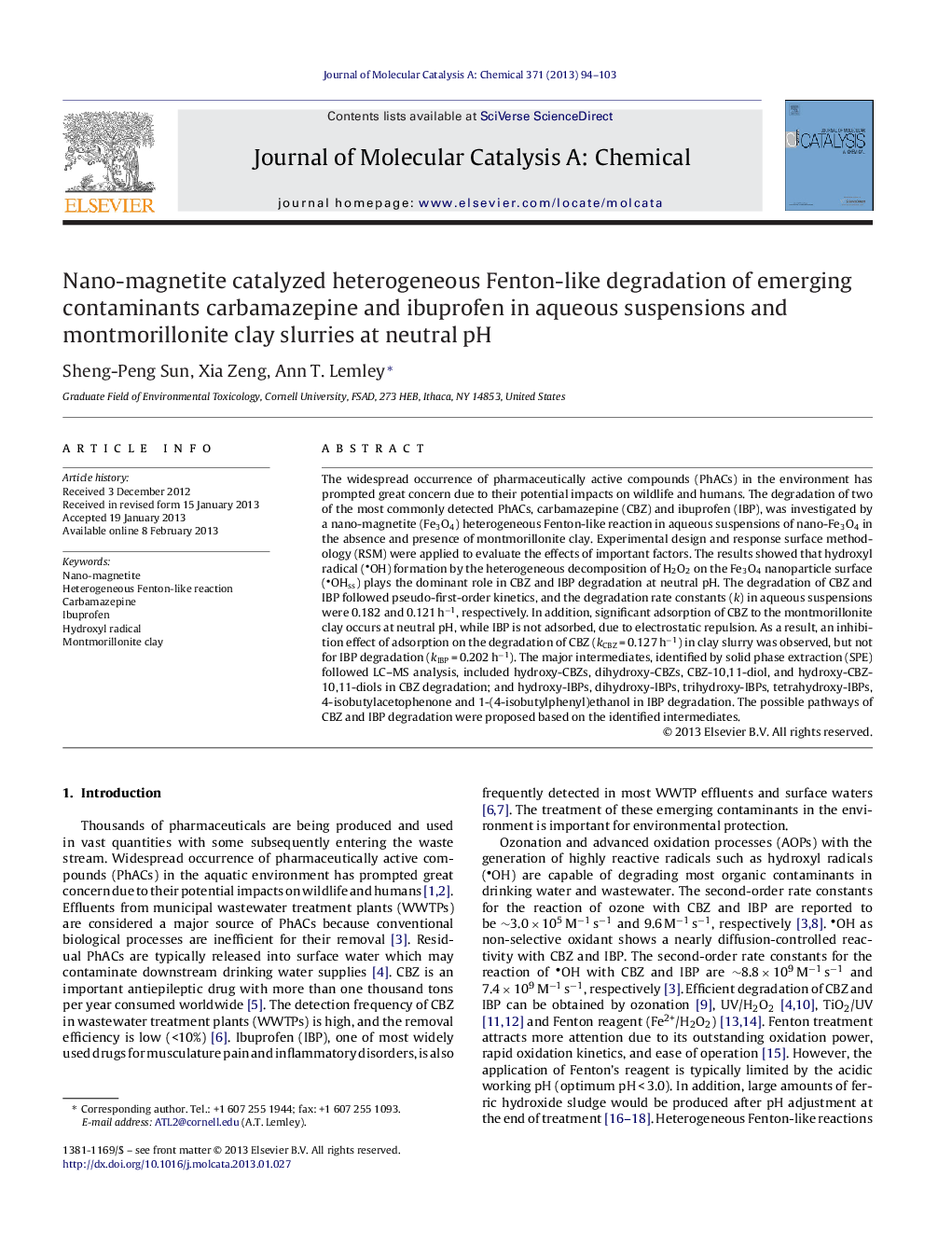| Article ID | Journal | Published Year | Pages | File Type |
|---|---|---|---|---|
| 65868 | Journal of Molecular Catalysis A: Chemical | 2013 | 10 Pages |
The widespread occurrence of pharmaceutically active compounds (PhACs) in the environment has prompted great concern due to their potential impacts on wildlife and humans. The degradation of two of the most commonly detected PhACs, carbamazepine (CBZ) and ibuprofen (IBP), was investigated by a nano-magnetite (Fe3O4) heterogeneous Fenton-like reaction in aqueous suspensions of nano-Fe3O4 in the absence and presence of montmorillonite clay. Experimental design and response surface methodology (RSM) were applied to evaluate the effects of important factors. The results showed that hydroxyl radical (OH) formation by the heterogeneous decomposition of H2O2 on the Fe3O4 nanoparticle surface (OHss) plays the dominant role in CBZ and IBP degradation at neutral pH. The degradation of CBZ and IBP followed pseudo-first-order kinetics, and the degradation rate constants (k) in aqueous suspensions were 0.182 and 0.121 h−1, respectively. In addition, significant adsorption of CBZ to the montmorillonite clay occurs at neutral pH, while IBP is not adsorbed, due to electrostatic repulsion. As a result, an inhibition effect of adsorption on the degradation of CBZ (kCBZ = 0.127 h−1) in clay slurry was observed, but not for IBP degradation (kIBP = 0.202 h−1). The major intermediates, identified by solid phase extraction (SPE) followed LC–MS analysis, included hydroxy-CBZs, dihydroxy-CBZs, CBZ-10,11-diol, and hydroxy-CBZ-10,11-diols in CBZ degradation; and hydroxy-IBPs, dihydroxy-IBPs, trihydroxy-IBPs, tetrahydroxy-IBPs, 4-isobutylacetophenone and 1-(4-isobutylphenyl)ethanol in IBP degradation. The possible pathways of CBZ and IBP degradation were proposed based on the identified intermediates.
Graphical abstractFigure optionsDownload full-size imageDownload high-quality image (154 K)Download as PowerPoint slideHighlights► Successful degradation of CBZ and IBP by a heterogeneous Fenton-like reaction with nano-Fe3O4 at neutral pH. ► Evaluation of the important factors by response surface methodology (RSM). ► Formation of OHss plays a dominant role in CBZ and IBP degradation. ► Strong inhibition effect of adsorption on the degradation of CBZ in clay slurries, but not for IBP. ► Degradation intermediates identification and proposed degradation pathways of CBZ and IBP.
